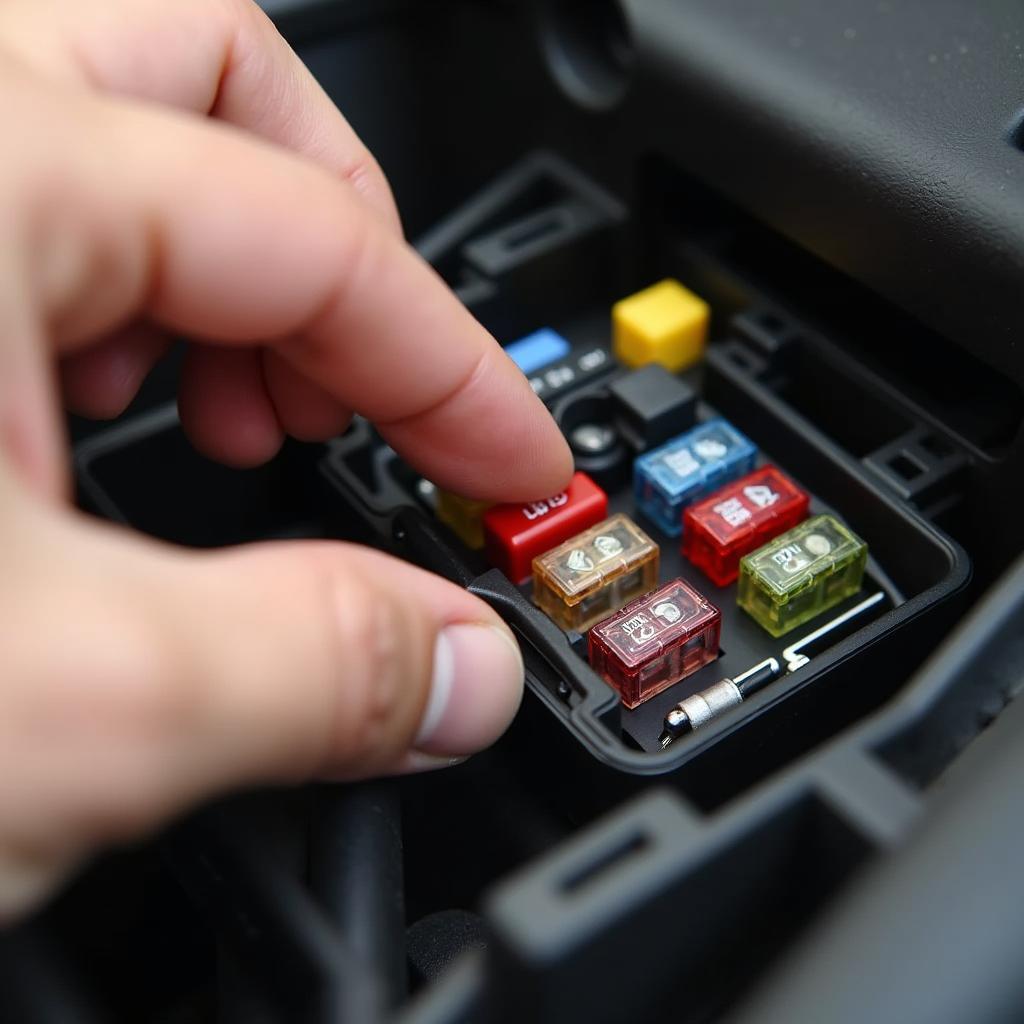Ever been caught off guard by a blown car fuse? It happens! But don’t worry, in most cases, it’s a minor issue you can fix yourself with a few simple steps. In this article, we’ll guide you through the process of replacing a car fuse and highlight what you need to consider.
What Does a Blown Fuse Mean?
Think of a car fuse as a tiny guardian angel for your vehicle’s electrical system. It’s part of the circuit and protects electrical components from power surges. If a short circuit or overload occurs, the fuse blows, interrupting the electrical flow. This prevents damage to sensitive electronics.
Replacing a Fuse: A Step-by-Step Guide
Before you start, it’s crucial to turn off the ignition and remove the ignition key. This prevents electrical shocks and ensures safety for both you and your car.
- Locate the Fuse Box: The fuse box is usually located in the dashboard on the driver’s side, under the steering wheel, or in the engine compartment. Refer to your car’s owner’s manual for the exact location.
- Identify the Defective Fuse: Open the fuse box. Typically, you’ll find a diagram on the inside of the cover or in the owner’s manual indicating which fuse corresponds to which component. Locate the fuse associated with the malfunctioning part.
- Remove the Fuse: Use a special fuse puller, often integrated into the fuse box, to carefully pull out the defective fuse.
- Inspect the Fuse: Examine the removed fuse closely. If the thin metal wire inside is broken or melted, the fuse is blown and needs replacement.
- Insert a New Fuse: Make sure to use a new fuse with the same amperage (A) rating as the defective one. Gently insert the new fuse into the correct slot.
- Close the Fuse Box: Reattach the fuse box cover.
 Man replacing a car fuse in the fuse box
Man replacing a car fuse in the fuse box
How to Identify the Correct Fuse?
Fuses come in various colors and amperage ratings. The color usually indicates the amperage, which is also printed on the fuse itself. When replacing a fuse, ensure the new one has the same color and amperage rating as the old one.
“Using the wrong fuse can lead to serious damage to the vehicle’s electrical system,” warns Dr. Markus Schäfer, automotive electrical engineer. “When in doubt, always consult a professional.”
What if the New Fuse Blows Again?
If the new fuse blows immediately, the problem likely isn’t the fuse itself but a deeper issue within the electrical circuit. In this case, it’s essential to visit a workshop and have the cause investigated by a professional.
 Mechanic in a car repair shop inspecting a vehicle
Mechanic in a car repair shop inspecting a vehicle
Additional Tips for Handling Car Fuses
- Always keep a set of spare fuses in your vehicle.
- Never use aluminum foil or other objects as a substitute for a blown fuse.
- Avoid operating multiple high-power consumption devices simultaneously.
Conclusion
Replacing a car fuse is generally a straightforward task. With a bit of DIY skill and our guide, you can quickly resolve most issues yourself. However, if you’re unsure or if fuses repeatedly blow, don’t hesitate to seek professional help.
Do you have questions about car repairs or need assistance with another issue? Visit our website autorepairaid.com and contact our experts. We are happy to help!

